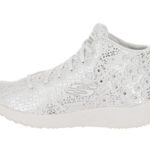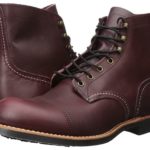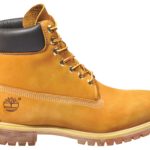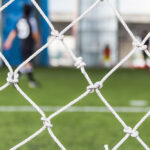When it comes to your shoes, you always want to be like Goldilocks – the fit needs to be just right. Otherwise, you can develop a slew of foot disorders and endure regular pain. Interestingly enough, research studies have shown that “between 63% and 72% of participants were wearing shoes that did not accommodate either width or length dimensions of their feet.” This leads many to question how to know if a shoe fits and what constitutes too big and too small? We have the details to get you on the right footing!
Step 1: Determine Your Shoe Size
The most important step in determining if a shoe will fit properly is knowing the actual size of your feet. This can be easily accomplished by tracing each foot while standing on a piece of plain white paper. Then, simply measure the distance between the longest points (toe to heel). This is your length.
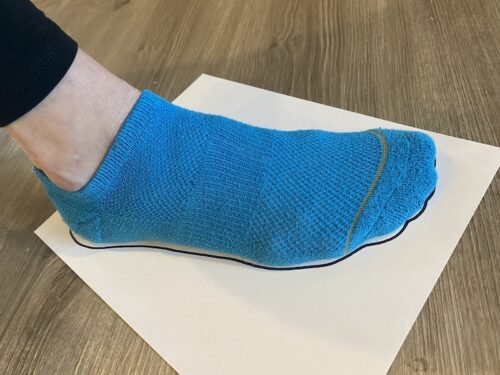
Next, wrap a soft measuring tape around the widest part of your foot (adjacent to the bunion joint). This is your width. While not all shoes come in varying widths, when they do, it is always best to find the option that best fits the contour of your feet. Shoe widths are designated by the letters A through E, beginning with the narrowest and ending with the widest options. B is the regular size for women and D is the average width for men.
Additionally, remember that everyone has one foot that is slightly larger than the other. Thus, once you have determined these numbers, always use the bigger quantity. Moreover, take these measurements in the evening when your feet are at their largest. These simple steps are the first way to know if a shoe fits, before even putting it on.
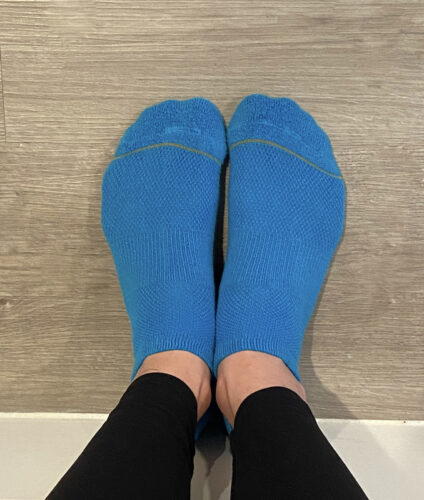
Step 2: Compare Foot And Shoe Shape
When purchasing shoes, our instinct is to always prioritize the form. Designers work tirelessly to create beautiful and vibrant pieces of footwear for every occasion. However, looks will not matter if the shoes do not fit correctly.
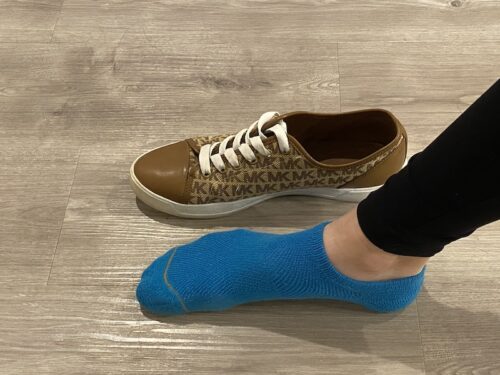
In order to select a pair of shoes that you will actually wear, first take the time to inspect the shape of the shoe. Does it mirror the dimensions of your feet? If not, it is likely that this footwear will spend the majority of its lifespan in your closet. The goal should be to find a product that looks like a larger version of the outline of your foot.
Step 3: Reference the Brand’s Size Guide
Next, remember that sizes are a starting point. Since size will vary greatly by brand, compare your measurements with the company’s shoe size chart. These can normally be found on their website. This is paramount when ordering online. In addition, just because you are a size 10 in a certain brand does not mean that every one of their shoes will fit you in the same way. Therefore, always follow all of the listed steps to guarantee that you know that the shoe fits properly.
Step 4: Assess Comfort
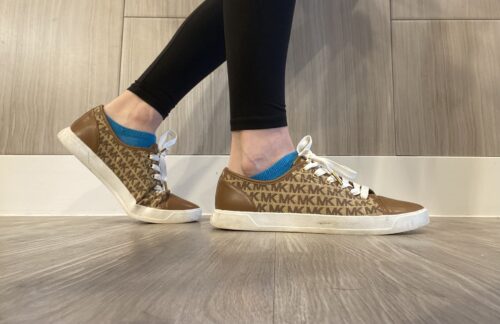
When in the store, try on both shoes and walk around for a while. How do they feel? Is there any area of your foot that is feeling pressure? It is exceptionally important to pay attention to the perimeter of your foot. The toe box and heel should never experience any discomfort. If they do, try moving up a size. If a larger option still doesn’t work, then the style of shoe may not be the best choice for you.
Additionally, it is crucial that you never assume that the shoes will stretch. Always purchase footwear with the belief that it will remain the same size and structure as the day you bought it. This will help to prevent friction and the development of “foot pain, poorer overall foot health, corns, and calluses in older people and foot ulceration in older people with diabetes.”
Also, remember that youth is not a magic solution to these problems. You will still experience blisters, calluses, and pain if your shoes don’t fit properly, no matter if you are 5 or 95. Those with advancing age and diabetes are just more prone to these types of problems.
Step 5: Consider The Shoe’s Purpose
Are these running shoes or your wedding shoes? Are you buying steel toe boots for work or UGG boots for comfort? When selecting footwear, it is imperative that you consider the purpose of the shoe and how long you will be in them throughout the day. This can help you to determine if they should be snug or loose-fitting. If these are accessories that will be in use for hours at a time, comfort should trump their appearance. If their purpose is for safety, make sure that they are form-fitting to prevent any accidents.
Moreover, the average pair of shoes will last anywhere between 8 to 12 months. If you are more active, they could wear down in less time. For this reason, inspect your shoes every few months for indications of wear and tear. Replace them when you notice physical signs of degradation as well as when they lose their original support and comfort level.
Step 6: Performance Matters
You would never buy a car without test driving it first, right? A pair of shoes should be no different! In order to know if a shoe fits correctly, you need to see it in action. When purchasing cross trainers, running shoes, basketball sneakers, or other athletic footwear, it is imperative that you not just walk around the store.
Sprint, jump, and shuffle from side to side. Engage in the movements that you will be making when you plan to wear these shoes on the court or the track. How do they handle these motions? Can you maneuver well? If there was no discomfort during these activities, then the shoe fits!
Step 7: Ensure Proper Space
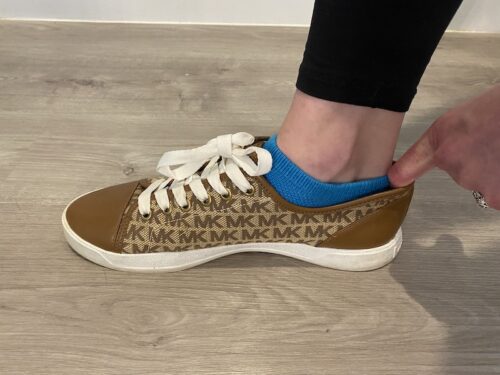
Furthermore, make sure that you can place your finger in between your heel and the back of the shoe while sitting. You want to ensure that there is the right amount of wiggle room for when you walk. There should be half an inch of space between the front of your inner shoe and your first or second toe (whichever is longer). When standing, there should be approximately an eighth of an inch of space between the back of the inner shoe and your heel.
For men with larger hands, use your pinky finger instead of the index. Furthermore, if you intend to place orthotic insoles in the sneakers, bring them with you when you go to the shoe shop. Then try on the shoes with these accessories. Similarly, wear socks when trying on footwear. If you intend to wear this accessory with your shoe, then you need to accommodate for the extra space that this footwear will fill. These simple steps are the best way to determine if a shoe is too big or too small.
If you find that your finger does not fit snugly in the space, try moving up a size. If there is too much room, then go drop to one that is smaller. Your heel should never be able to lift out of the shoe while moving. This indicates that the shoe is too big. Lastly, when half sizes are available, try those first. For those wanting to know if a shoe fits properly, these are fantastic and easy techniques to use.
Step 8: Remember Shoe Size Can Change
The most important thing to remember is that your shoe size from five years ago may not be the same now. Just like the rest of your body, your feet change over time. This is exceptionally true for those with diabetes, women who become pregnant, and those who have experienced weight changes. Thus, remeasure your feet every few years and after any changes in your health.
For those with children, expect the shoe sizes to increase much more rapidly! It is recommended that you measure your kid’s feet every two months. Moreover, they will not necessarily know how to articulate when their shoes are too small. Therefore, watch for signs that their shoes are uncomfortable. This can range from randomly pulling them off, becoming less active, or acting irritated for no apparent reason.
Final Thoughts
While you should never assume that new shoes will stretch, they will soften over time. Since the material that makes up your shoes is brand new, it will be extremely stiff. Thus, once you have found shoes that have just the right fit for your foot, wear them around the house before venturing out too far. Additionally, wear them often, but for short spurts of time. This can help to ease you into this new normal.
Finally, your feet take you everywhere you go. They are your foundation. Prioritize their health by investing in shoes that not only fit but are made well. Quality matters when it comes to your footwear!
